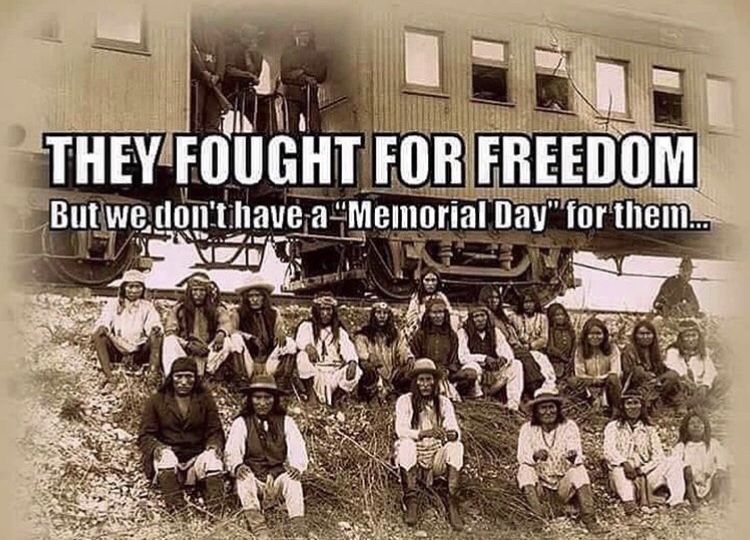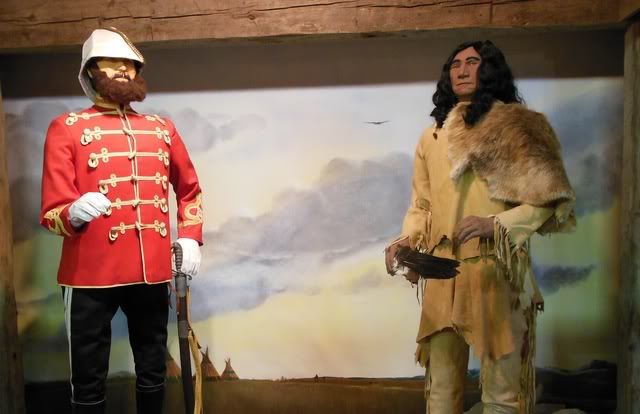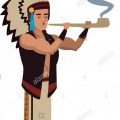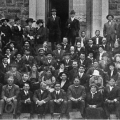
In 1965, Indian concerns centered around a number of issues, including the hunting and fishing rights which had been guaranteed in treaties; land claims often related to fraudulent treaties; Indian education; dams whose reservoirs destroyed traditional Indian lands; religious freedom; and the relationships with the states. Some of the events related to these issues are briefly described below.
Fishing and Hunting Rights:
In Oklahoma, a loose-knit confederation calling themselves Five County Northeastern Oklahoma Cherokee Organization came together to discuss their treaty-guaranteed hunting and fishing rights. A number of additional issues—disputes over taxation, discrimination in health and social services, and fraudulent land sales—soon emerged from the discussions.
At Frank’s Landing on Washington’s Nisqually River, a group of Indians called attention to their battle for Indian fishing rights by holding a “fish-in”. The event lasts for only a half-hour and ends with 6 Indians in jail. Yakama/Cherokee writer Sidney Mills described the event this way in Red Power: The American Indians’ Fight for Freedom: “19 women and children were brutalized by more than 45 armed agents of the State of Washington.”
The Yakama, as well as several other tribes, had declined to support the “fish-in” movement. However, when Washington state fish and game officials arrested a dozen Yakama elders for fishing in their usual and accustomed places along the Columbia River, the situation changed. Young Yakama put on their Marine and Army uniforms, shouldered M-1 rifles, and patrolled the river banks.
In Wisconsin, a member of the Bad River Chippewa was arrested for illegally netting fish in Lake Superior. The treaty rights defense was rejected by the court. Concerned about fishing, hunting, and gathering rights, the tribal council passed a resolution in response to the conviction which stated: “that the Bad River Band of Lake Superior Chippewa Indians do hereby oppose any and all bills introduced in Congress or any acts of Congress to create within the original boundaries of the Bad River Reservation any part or parcel of the so-called Apostle Islands National Lake Shore.”
In Michigan, Keweenaw Bay Band of Chippewa tribal chairman Bill Jondreau was arrested for illegal possession of four lake trout. State law required that he throw the dead lake trout back into the water and Jondreau found it difficult to waste fish. Jondreau stood on his tribe’s treaty rights—article 2 of the 1854 treaty—but was convicted.
Education:
The Haskell Institute became the Haskell Indian Junior College. The curriculum was expanded to include courses in business and training courses in secretarial, the building trades, electronics, and service occupations.
In Washington, the Head Start program for preschoolers was established in Neah Bay on the Makah Reservation. It was initially a summer program.
In Arizona, the Lukachukai Demonstration School was founded on the Navajo Reservation with funding from the Office of Economic Opportunity.
Land Claims:
In New Mexico, the Indian Claims Commission (ICC) ruled that Taos Pueblo held aboriginal title to Blue Lake, a sacred area taken from them by Presidential proclamation in 1906. The ICC found that not only had the government illegally extinguished the Taos’ aboriginal title to the land, but in addition the government had cheated the Indians out of more than $300,000 in compensation. Historian Andrew Graybill, in article in the New Mexico Historical Review, reports: “Although pleased with the findings, the Indians declined to accept a financial settlement, planning as before to use the ruling as leverage to win title to the land.”
In Seneca Nation of Indians versus U.S., the Court of Claims ruled that the Indian Claims Commission Act did not cover pre-1790 claims.
In Washington, the Palouse on the Yakama and Colville Reservations were awarded $593,000 by the Indian Claims Commission. Clifford Trafzer and Richard Scheuerman, in their book Renegade Tribe: The Palouse Indians and the Invasion of the Inland Pacific Northwest, report: “But most of the Palouse Indians did not celebrate a victory when they learned the outcome of the Indian claims case, for the Indians had won money, not the return of their lands.”
The Indian Claims Commission awarded 27 cents per acre to the Southern Paiute for lands taken in Utah.
The Shoshone on the Wind River Reservation in Wyoming were awarded $120,000 to compensate them for gold taken from their land by miners.
In Confederated Salish and Kootenai Tribes versus the United States the court held that the government surveys in 1892 for the Flathead Reservation in Montana were in error and that 10,586 additional acres should be included in the reservation.
Dams:
In Tennessee, the Cherokee opposed plans to build the Tellico Dam on the Little Tennessee River. The new reservoir would flood many historic Cherokee sites, including Chota which had been the Cherokee capital. A delegation of Eastern Cherokee as well as other citizens’ action groups presented a petition opposing the dam to Supreme Court Justice William O. Douglas.
Kinzua Dam was completed and 10,000 acres of the Seneca’s Allegany Reservation was flooded. The Seneca were left with only 2,300 acres which were flat enough to use. The newly created reservoir required 3,000 Seneca graves to be relocated. According to political scientist Sharon O’Brien, in her book American Indian Tribal Governments: “The Army Corps of Engineers had unceremoniously unearthed the remains of Cornplanter and three hundred of his descendants, moved them to a newly constructed Indian-white cemetery, and flooded the old burial ground.”
Religion:
In South Dakota, Jesuit priests said mass in the dance arbor of the Sioux Sun Dance put on by Frank Fools Crow on the Pine Ridge Reservation. The mass was done at the request of elder Jake Herman.
In South Dakota, piercing was once again allowed at the Sun Dance on the Sioux Pine Ridge Reservation.
In the Drug Abuse Control Acts, Congress listed peyote as forbidden along with other psychedelic drugs.
The Nevada state legislature reconsidered its prohibition on peyote. Testimony by members of the Native American Church convinced the legislature that the Native American Church should be allowed to use peyote under the provisions of religious freedom guaranteed by Nevada’s constitution.
The States:
North Carolina granted the Haliwa recognition as an Indian community.
The State of Maine created a Department of Indian Affairs.
In Texas, the state legislature created the Commission for Indian Affairs and transferred control and management of Indians to it.
In Montana, the Appeals Court in Colliflower v. Garland found that: “it is pure fiction to say that the Indian courts functioning in the Fort Belknap Indian community are not in part, at least, arms of the federal government. Originally, they were created by the federal executive and imposed upon the Indian community, and to this day the federal government still maintains a partial control over them.”
The Tribes:
In California, the Karuk Tribe of California was incorporated to preserve the traditional knowledge of the people. Any person who was one-eighth Karuk or more was able to join.
In Oklahoma, Clifton Hill and other Creek leaders for the Creek Centralization Committee began to advocate for the formation of a real Creek government. The office of principal chief since 1906 had been filled by puppet leaders appointed by the U.S. President. The committee drafted a new constitution and by-laws. Clifton Hill explained: “We have been fifty-eight years without representation and we do not want a drugstore Indian for a chief. We want a free election, a free voice, just like any other tribe.”
In Oklahoma, the Inter-Tribal Council of the Five Civilized Tribes—Cherokee, Choctaw, Chickasaw, Creek, Seminole—recommended that a new Indian hospital be constructed at Tolihina as soon as possible. The Council also recommended that Indian hospitals provide dental care for all Indians regardless of age.
In Texas, attorney Tom Diamond began an inquiry on the status of the Tigua. He was told by anthropologists that the Tigua were extinct. The Tigua, however, maintained that their culture still exists. Historian Jeffrey Schulze, writing in the Southwestern Historical Quarterly, reports: “The problem was that while Tigua culture had not died out, it had changed and, most significantly, been kept hidden from and perhaps ignored by the surrounding community.”
In Texas, Andy Abierta, the governor of Isleta Pueblo met with the Tigua in El Paso. The Tigua are Tiwa-speaking people who split off from Isleta following the 1680 Pueblo Revolt.
In California, Mary Yee, the last native speaker of Barbareño, a Chumash language, died. With her death, the Chumash languages no longer had any native speakers.
In North Carolina, Eastern Cherokee leader Osley Saunooke died from diabetic complications. He had served two terms as the Principal Chief of the Eastern Cherokee and had been the world super heavyweight wrestling champion.
Art:
In Washington, D.C., the first American Indian Performing Arts Festival was held. The festival had two component parts: (1) a performing arts program, and (2) an Indian arts and crafts exhibition. The exhibit of Indian art, held at the Department of the Interior’s art gallery, included both older objects on loan from museums and collections throughout the United States and recent works by students at the Institute of American Indian Arts. The performing arts program was written and directed by Cherokee artist Lloyd Kiva New.



Leave a Reply